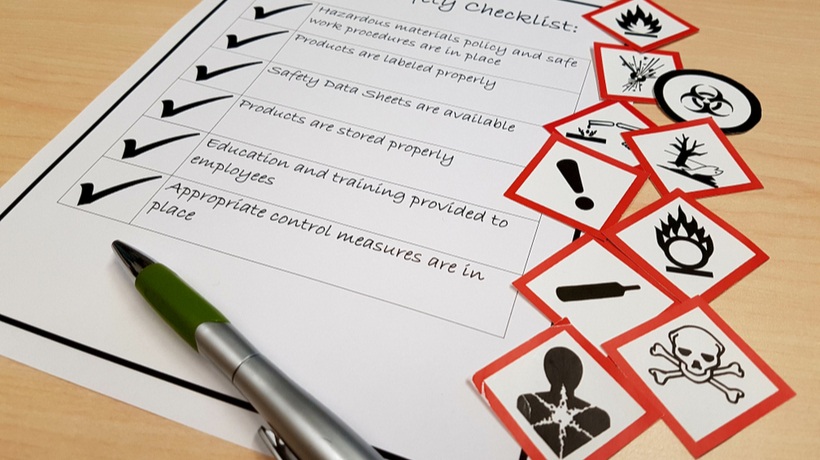How To Make Compliance Training Engaging
I remember the compliance training that came with my first job in a global fast-food chain. I’d already received in-store training from a fellow acne-ridden teen, so I didn’t understand why I had to repeat the same training, unpaid, on my own time. According to my manager, the reason was “because it has to be done.”
After weeks of nagging, I finally logged on to find so many modules it would take hours to complete. Each one consisted of wall after wall of text, only punctuated by the occasional low-res photo. At the end of each module was a handful of multi-choice questions that nit-picked tiny, insignificant details from the content to make sure I’d read and memorized everything. Some of the content was obviously out of date, and my store clearly didn’t follow half the procedures we were apparently supposed to, quietly communicating that none of it was worth paying attention to.
A year later, our inspection manager was replaced by another who couldn’t care less about the training, and new employees were no longer chased up to complete it, driving home just how frustratingly useless the whole thing had been. Needless to say, the whole experience left me with a bad attitude toward compliance training for years. To me, compliance training was the land of box-ticking and nagging. The realm of unpaid boredom and complex corporate terminology. The domain of unfocused eyes and HR mandates.
Now I know that my compliance training experience could have looked far, far different. It could have been—dare I say it—enjoyable, engaging, and informative. I also know how critical compliance training really is; I can count far too many scandals involving big companies that could have been completely avoidable from Volkswagen's "dieselgate" [1] to Wirecard’s current insolvency [2], or WeWork’s spectacular IPO failure [3].
Enjoyable compliance training isn’t out of reach. A few key principles and techniques can radically transform your team member’s learning experience, boosting engagement, and knowledge retention.
1. Perfect The Why
You’ve heard it from us before and you’ll hear it again because we believe it’s so incredibly fundamental: Learners need to believe in why they are doing the training. Take my experience, my why was “because my manager made me,” and my manager’s why was “because I have to tick this box.” My attitude was apathetic, bordering on outright resentful, I did whatever it took to get it over with as quickly as possible so I didn’t retain anything.
If I’d had the right why, the right reasons and motivation, I’d have been far more invested in the learning experience. I love how Convercent put it:
Compliance programs must break this cycle by turning compliance push into employee pull. We must give employees an answer to the question, “What’s in it for me?"
To learn how to perfect the why, I turned to expert learning designer Annette Phung, from learning design agency Savv-e. She says:
As with all training, I think it helps to really analyze the learner group's motivations and pain points. We do this by creating learner personas in a kick-off workshop. With personas, you’re able to move beyond "here's a list of rules you have to follow" to being able to articulate to learners "this is why it's valuable to you, the business, and the community, and here is how you can overcome the common challenges related to it."
2. Take A Microlearning Approach
This one might seem counter-intuitive. Like the fruitless hours I spent on my eLearning experience, there’s an assumption that complex regulations require exhaustive (and exhausting!) digital compliance modules.
Our company's director, Lisa Vincent, loves to challenge this idea. She proposes to "create small, agile learning objects around each learning outcome—people can access these when they need them in the context of real, on-the-job compliance challenges. With this approach, organizations can move away from learning as a destination towards Josh Bersin’s paradigm of learning in the flow of work.”
It’s a brilliant idea that returns to the idea of employee pull instead of employer push. With small, highly-focused learning objects, your team members can pull the content they need, instead of having large amounts of irrelevant content pushed on them from above.
3. Use Realistic Examples And Stories
Once you’ve articulated the why of your training and identified your approach, you can start thinking about techniques to maximize the engagement factor of your content.
All humans are inherently wired to find stories engaging and memorable. They’re also the perfect way to bring otherwise dry regulations to life by putting a face on the situation and directly demonstrating compliance in action. There are many ways that you can incorporate storytelling, such as case studies, but often it’s as simple as reframing a question or piece of knowledge from dry recitation to a story around one or two individuals facing a relevant situation.
Annette is a master of weaving storytelling into the compliance learning objects she develops. Her tip is:
It helps to look at the shades of grey instead of just black and white (i.e., what are some realistic situations where it is difficult for the learner to know which path to take?) Try to challenge your learners to make decisions that require them to factor in a bunch of different variables or complexities. Doing this can make case scenarios, knowledge checks, and assessment questions far more interesting and engaging.
Wave Goodbye To Boring
Sadly, I will never get back the hours I lost to poorly designed eLearning when I was a teen, but there’s no reason for you to sentence your team members to the same fate. Instead, take the time to identify the real reason why they should want to learn how to be compliant, pick an approach that is agile and maximizes relevance, and weave your learning full of stories to create an experience that is engaging and informative for your team members. As Lisa Vincent put it, use your compliance training to “move from learning as a destination to learning in the flow of work.”
References:
[1] Volkswagen: The scandal explained
[2] Wirecard files for insolvency amid German accounting scandal
[3] The WeWork mess, explained










